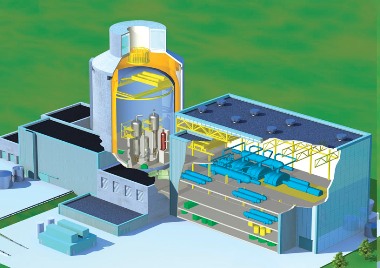UK regulators have warned that they need more information from Westinghouse on the AP1000 reactor before it can be certified for build.
 |
| AP1000 |
If the regulator is not happy that reactor companies have shown the safety of their designs clearly enough, then an 'exclusions' could be made in the GDA statements, meaning more analysis to address that aspect of the design before build can really begin. The raising of a 'regulatory issue' is an early notification from the regulator that it considers an exclusion could potentially follow.
Yesterday the HSE said that it has raised such a regulatory issue concerning the construction of some plant buildings of the AP1000. It said that "there is a lack of evidence to demonstrate that they would be sufficiently robust" under normal conditions and also in case of severe weather or external hazard.
The issue for Westinghouse is to show that its new steel-concrete-steel modular construction technique could protect major reactor safety systems adequately. The HSE described it as a "sandwich of steel plates filled with concrete" rather than "more conventional reinforced concrete, which is strengthened with internal steel bars" and reminded Westinghouse that extra assurance is required for novel techniques. US regulators have also asked Westinghouse for more information on the same topic, and the company is currently working with Purdue University to study earthquake resistance.
This is the second such issue raised in the GDA process - the other concerns the EPR, which has not yet been shown to have sufficient independence between control systems and safety systems. The HSE said it expects a forthcoming report from Areva to address that concern.
The HSE noted carefully that the raising of the issue with AP1000 does not indicate any deficiency in the design, but shows how the GDA system identifies potential regulatory problems early on, "when a solution can be identified and implemented more effectively and efficiently."
The worst-case scenario regarding a regulatory issue would be that it remains until July 2011 and results in an exclusion. Then, a utility that wanted to build the reactor would have to submit separate documentation to cover the excluded area, potentially making new build more difficult, less predictable and marring the intended simplicity of the new UK system. Generic reactor assessments are meant to be combined with generic site assessments to create an overall application for an independent panel to consider in line with published national policies.
Researched and written
by World Nuclear News





_18570.jpg)
_16159.jpg)
_49205.jpg)





